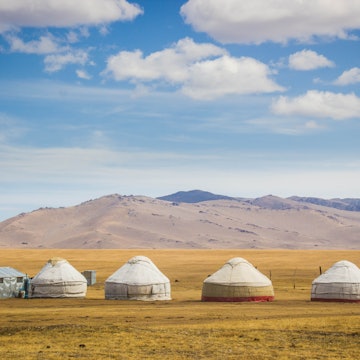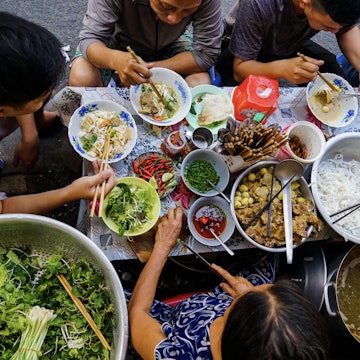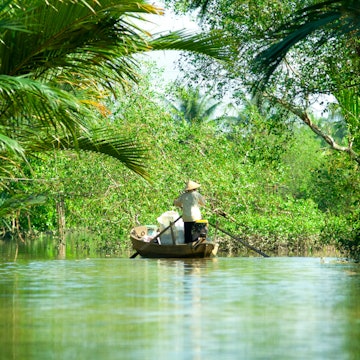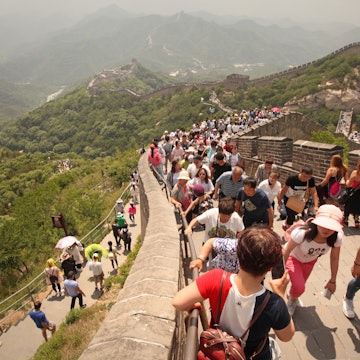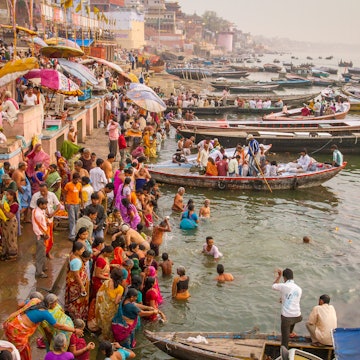
The ultimate guide to Tibetan Buddhist monasteries: exploring gompas in the Himalayas

Nov 22, 2024 • 7 min read
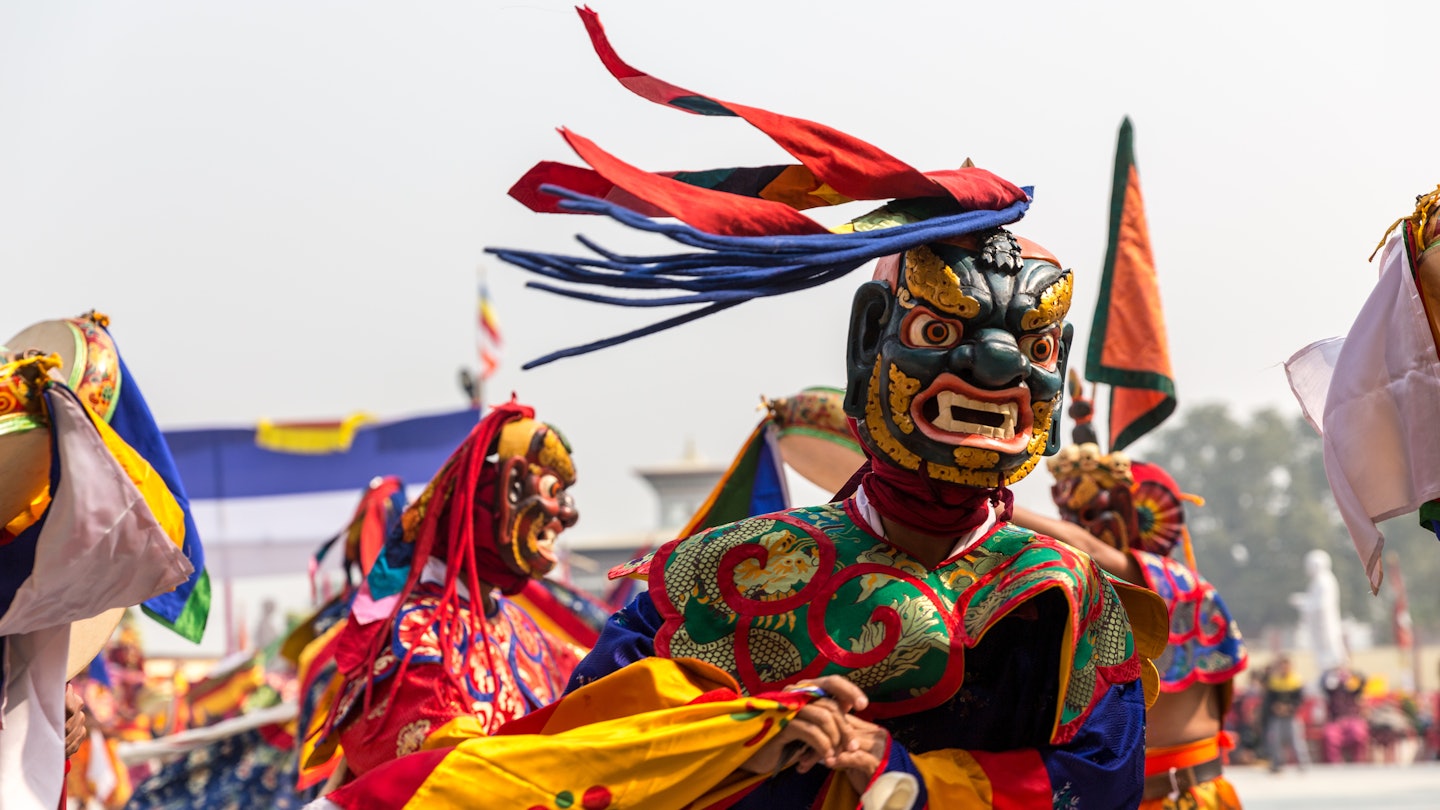
A Buddhist monk practices a traditional mask dance. ryosho/Shutterstock
The barren, high-altitude plateaus of Tibet and snow-capped peaks of the Himalayas have one feature setting them apart from all other mountain environments: gompas. Meaning “places of meditation” in Tibetan, gompas are basically monasteries — some small-sized, some as big as village-like enclosures — where monks and nuns live, are educated to the Buddhist equivalent of a PhD, and take care of the religious needs of the surrounding lay communities. Think of gompas as living Buddhist universities that preserve Tibetan culture and identity.
On the outside, gompas are box-like and straightforward, often whitewashed or maroon and flanked with stupas, a dome-shaped structure that often contains relics and serves as a place for meditation. But on the inside, their plain exteriors explode into a cataclysm of colors, a microcosm of golden statues of Buddhas and other celestial beings, and intricate murals imbued with concepts of ancient spirituality, numerology and cosmology — a lot to take in for the uninitiated traveler. This Tibetan monastery travel guide will help you better understand the world of gompas, spiritual centers at the heart of Himalayan culture.
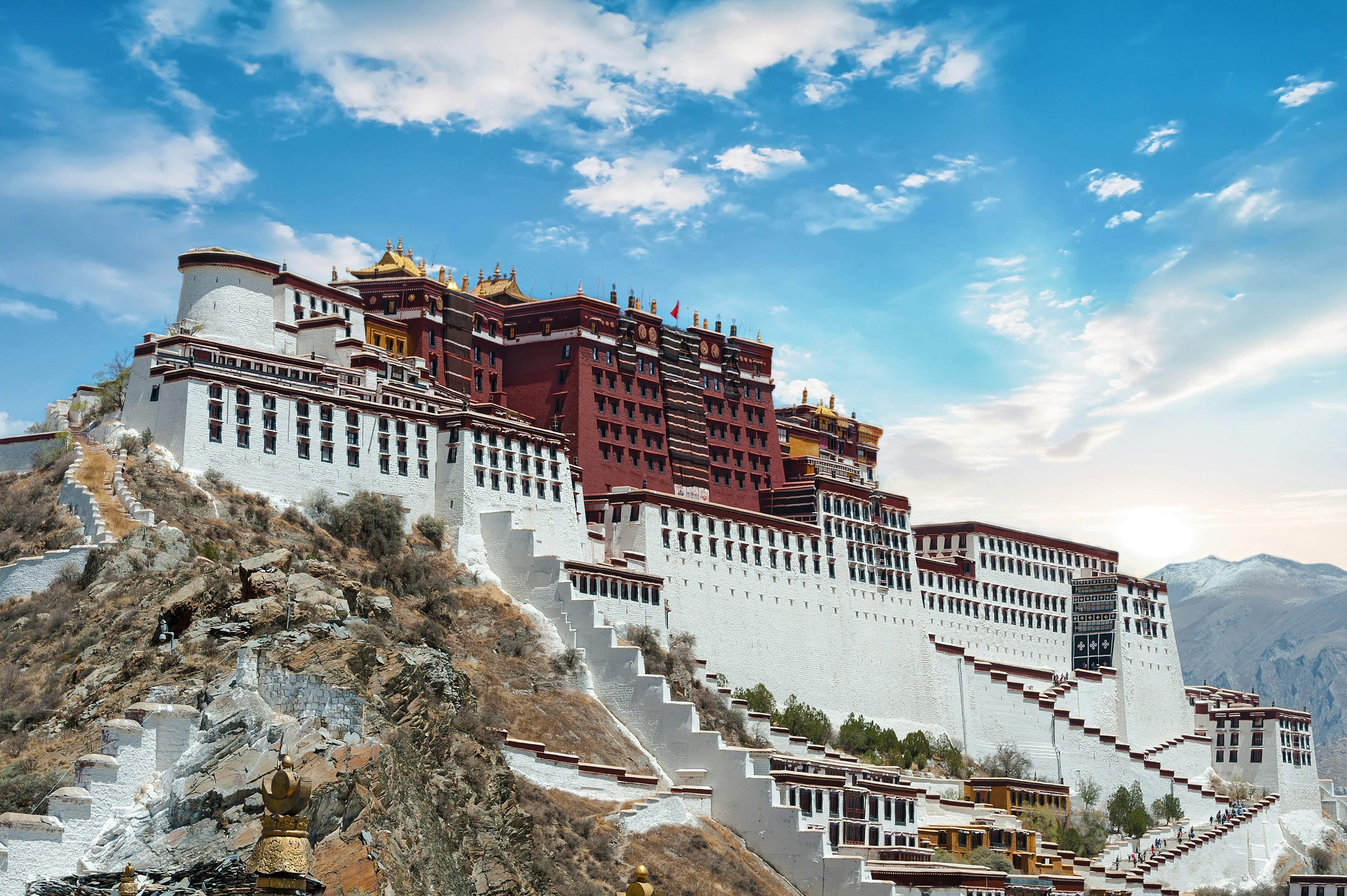
Decoding the spiritual architecture of a Tibetan gompa
The Wheel of Life (Bhavachakra)
Who are all the angry demons pitted on a gompa's inner walls, and what is the meaning of the large wheels they hold with their claws and, sometimes, between their fangs? Bhavachakra, or Tibetan Wheel of Life, is the most essential representation of the complex relationships that make up the philosophy of the Buddhist universe.
The wheel’s outside rim symbolizes the endless cycle of karmic cause and effect, inside of which six same-sized slices represent six different realms, or coexisting worlds, where humans, animals, gods, the damned and the demi-gods lead lives of suffering because of what spins at the wheel's very center — the three poisons of ignorance (represented by a pig), attachment (a snake) and aversion (a bird).
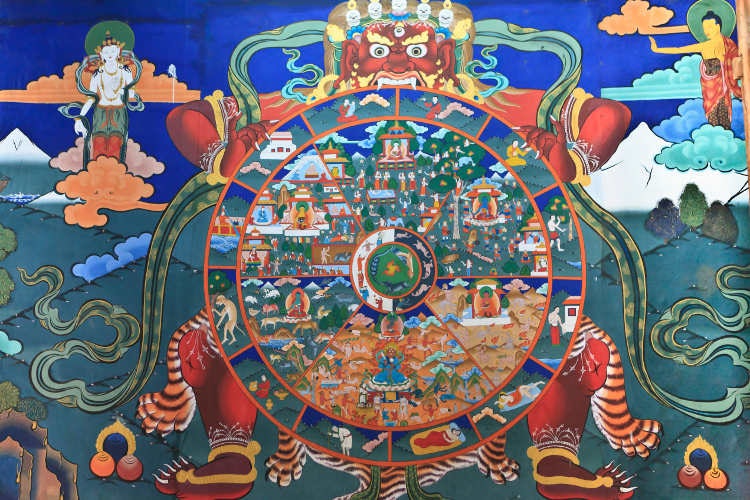
Main prayer halls (Lha khang)
A gompa’s main prayer hall serves as a visual textbook for those who can understand the symbolism of every figure within its walls, but it is also a house. In Tibetan, “lha khang” means residence (khang) of god (lha) and refers to the enlightened beings (bodhisattvas) and the Buddha that live within it.
Mask rooms and ceremonial spaces
Tibetan Cham dances, when Tibetan monks wear colorful wooden masks and perform movements that read like stories for those in the known, are a cultural delight but require visiting gompas at precise times of the year. Most gompas hold some of these beautiful and sometimes unsettling masks in special rooms — look out for the skeletal face of Chitipati, lord of the charnel grounds (places where bodies are cremated or left to decompose), or the deer-shaped masks that symbolize the innocence and power of this animal.
Chortens
A chorten is a Tibetan-type stupa — with a large, bulbous middle portion representing water set above layers of steps and topped by a golden spire symbolizing fire. Inside, chortens are organized in layers, representing the path to enlightenment. Created initially to enshrine relics of the Buddha, today chortens are found in gompas all over the Himalayas, northwest China and Mongolia. Their shape represents the five proportions of Buddha's body and the five elements of Buddhist philosophy — the square base at the bottom, for example, stands for the earth and underworld.

Buddhist Deities and Symbolism
Different forms of Buddha
To confuse things, Buddha is not just the historical Buddha Sakyamuni (Prince Siddharta Gautama, born in Nepal at Lumbini). Gompas can also host statues of Maitreya, the future Buddha who will come to help humanity reach enlightenment, or the five Dhyani Buddhas who are self-born and have existed since the beginning of time. Depicted seated and almost identical, they distinguish each other by the positions of their hands and the direction they face.
Bodhisattvas and their meanings
Gompas often features other statues next to the Buddha: taking their name from the Sanskrit words “bodhi” (enlightenment) and “sattva” (being), these merciful celestial beings are on the way to reach the final enlightenment but decided to delay their entrance into Nirvana to help the earthbound. Many Bodhisattvas exist, and Avalokitesvara, known as Goddess of Mercy Guanyin in East Asian Buddhism, is a popular representation.
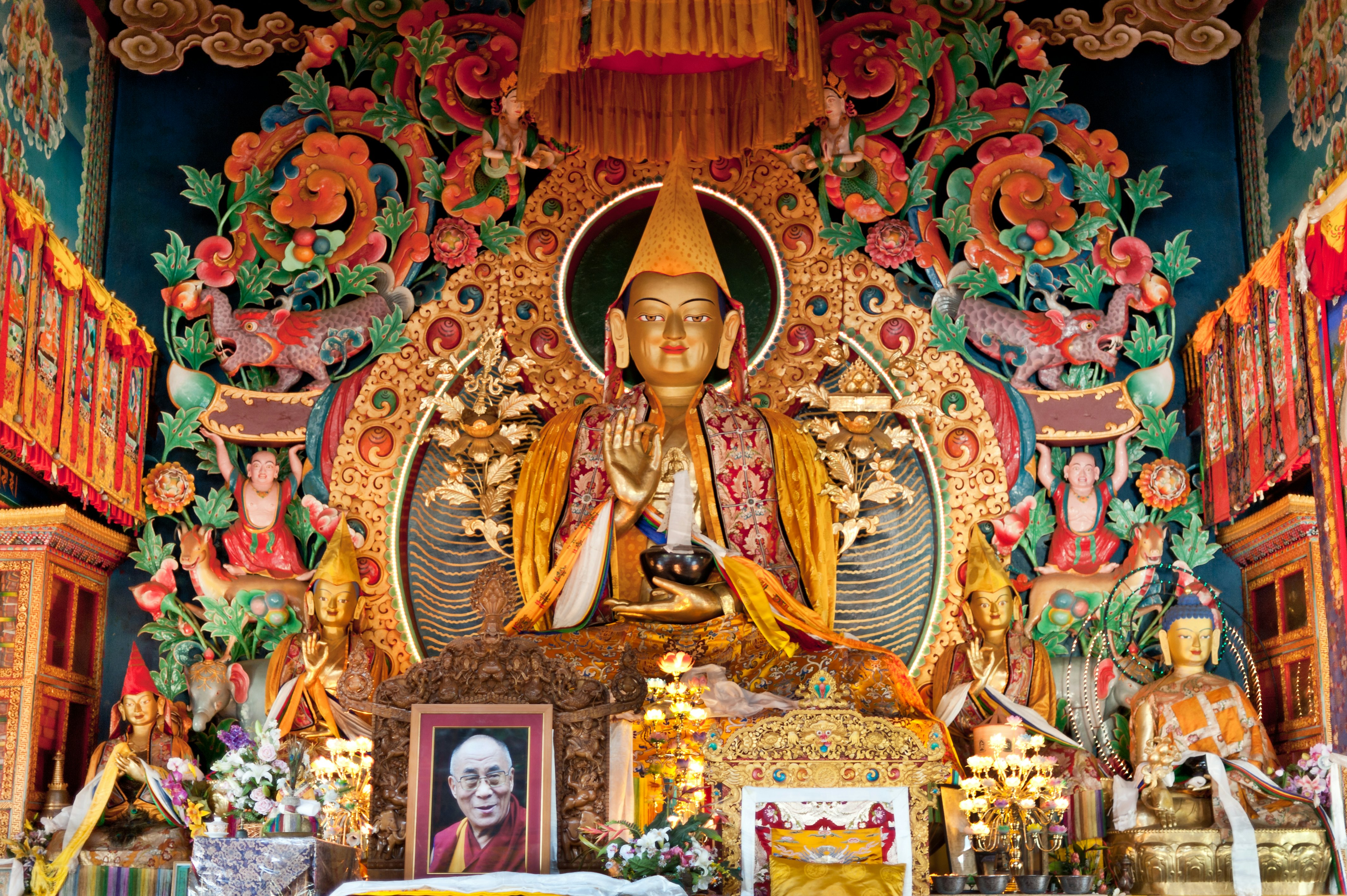
Protector deities (Dharmapala)
You may wonder why the walls of every gompa are painted with fearsome, monster-like entities, some adorned with garlands of skulls under their sharp fangs and wild eyes. Look better: they are benevolent, heightened beings. Like the Buddha, these fierce-looking dharmapala have a third eye of enlightenment on their foreheads and are the protectors of his teachings, the dharma.
Common Buddhist symbols
Other common Buddhist symbols are the lotus flower, a symbol of the Buddha’s awakening and equal potential for all beings to reach enlightenment; the white conch shell, which represents the spread of the dharma; the two golden fish, a symbol of liberation from the endless cycle of death and rebirth; and the parasol, a protector from all evil.
The best 6 gompas to visit
Potala Palace, Lhasa
Standing tall in the center of Lhasa in the Tibetan Autonomous Region of China, the Dalai Lamas's former residence is the grandest gompa, filled with a thousand mural-adorned halls. But visiting it and Tibet is only possible on tightly controlled tours, which force travelers to rush through this incredible gompa.
Tawang Monastery, Tawang
Perched on the border between northeast India’s Arunachal Pradesh and Tibet, Tawang is the largest monastery in India and the second largest gompa after the Potala Palace. Tawang Gompa's most imposing hall is the three-story tall assembly hall, Dukhang, housing a 7.6m-high (25ft) golden statue of Buddha seated on a lotus throne. Visit in early March when the local Monpa people celebrate Losar, the Tibetan New Year, or in the summer months to avoid the glacial winters.

Labrang Monastery, Xiahe
One of the six great monasteries of the Gelugpa "Yellow Hat" sect of Tibetan Buddhism, this large, citadel-like gompa in the town of Xiahe in Gansu, China, has a 3km-long (1.9-mile) prayer wheel circuit and is one of the Tibetan world's most renown schools. And unlike Tibet, it’s easily accessible without restrictions. Rise before dawn and join the pilgrims as they chant and spin the wheels for a unique experience.
Tabo Monastery, Tabo
Hidden in the barren Spiti Valley of north India’s Himachal Pradesh, Tabo Gompa was founded in 996 CE and is the oldest continuously operating gompa in the Himalayas. Even though the structure needs refurbishing, the collection of well-preserved ancient Buddhist statues, frescoes and thangkas is unlike anywhere else.

Pughtal Monastery, Zanskar, India
A symbol of the utter isolation and deserted beauty of the Himalayan region of Ladakh, Pughtal Gompa was developed from a natural cave dwelt by itinerant meditating monks around 2550 years ago and established as a gompa in the 12th century. Today's structure hangs from that dramatic cliff face at 3800m (12,467ft) height as a stunning reminder of monastic resilience.
Kopan Monastery, Kathmandu, Nepal
Located near the landmark Boudnath stupa, Kopan Gompa is not only stunning with its four turrets stacked high on a hill against a serene, verdant mountain backdrop but also famous for being one of the few gompas to teach to foreigners.
Planning your trip: a Tibetan monastery travel guide
Etiquette and customs
Enter prayer halls and walk clockwise, keeping silent and aware of the monastic environment. Do not point your feet, considered the lowest and dirtiest part of the body, at the teachers, other monks, the altar or holy objects. Also, never sit on the floor or the mats reserved for the monks.
Photography guidelines
With their striking greens, blues and golden hues, gompas’ inner halls are some of the most photogenic ambiances in the world — especially when they are filled with chanting monks in the morning light. But hold your shutter: most gompas do not allow photography. Taking pictures of the exteriors and temple surroundings is generally acceptable (and most younger novice monks will be delighted even to pose for you), but inner halls are a different game. Even if it’s not indicated with a sign, never point your lens too close to a monk, altar or statue.
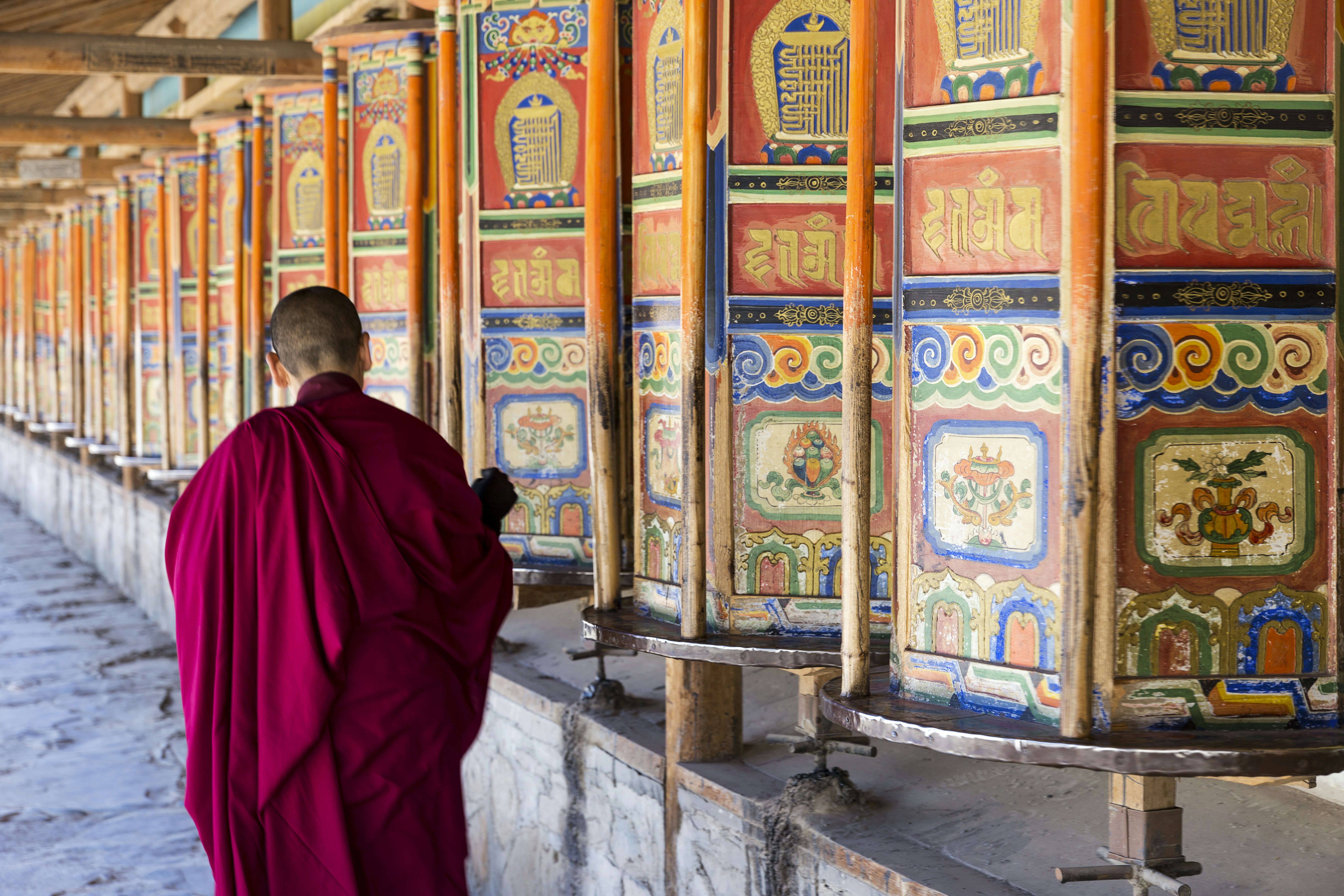
Dress code
Like any holy place of worship around the world, dress modestly. If going to the Himalayas in the summer when the blistering high-altitude sun is out, try to avoid entering gompas with shorts and revealing clothes, and take off your hat in front of any lha kang.
Best times for prayers and ceremonies
As a rule of thumb, any gompa is most active just before sunset, when monks gather for their morning prayers and chanting in the lha kang.







